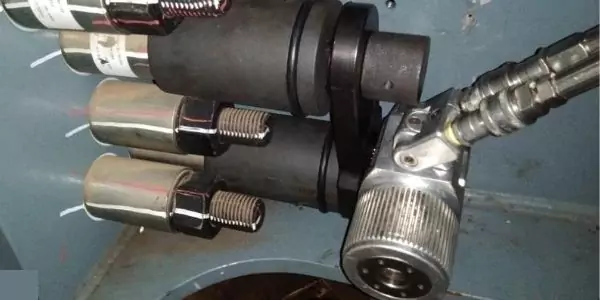While we have already addressed the basics of torquing in our previous articles, the fundamentals of bolting is to stretch the bolt enough so that the nut could be loosened/tightened. Having said that, it is proven that combining torque with angle tightening methods can reduce the uncertainty in the bolt tightening process by reducing the dependency on torque control alone. In this article, we will talk about how torque and angle enhance the efficiency of bolting operations and the different types of torque wrenches that offer the same.
It is preferred that the fasteners are tightened using standard tightening tools. To avoid the need of any special tightening tools as servicing would be performed using standard equipment, the torque-angle tightening method would meet most of the requirements. The torque angle tightening method specifies an initial tightening torque. An angle of turn is later specified for the bolt/nut to be rotated through. The angle of rotation should be such that the required bolt load is induced into the bolt eliminating the clamp force scatter because of friction and other variables.
It is important that maintenance engineers understand the relationship of torque and angle. As torque measurements are popularly known to monitor the security of fasteners. However, there are times when torque measurement gives a high torque value but fail when the clamp force is measured. To ensure precision bolting is followed on every job, a measurement technique called torque and angle was developed. The technique consists of torque measurement being plotted on a graph when the fastener is tightened or loosened. The arch created is the torque angle. Many industries like infrastructure, wind, heavy engineering, etc. use this technique to get more accurate bolting outcomes.
The use of torque and angle method reduces the variations of bolt load distribution in the bolts of a joint. Tightening of the nuts to a specified torque and then turning the nut through a predetermined angle reduces the variation of torque among the bolts / nuts and in turn the bolt loads in that joint.
To implement this method with a hydraulic torque wrench or pump that does not support torque and angle measurement can be tedious for the operator. Bolting tools or pumps that measure torque and angle eliminate the need for an operator to use an angle gauge or protractor together with the torque wrench. As these technologies offer faster and accurate results for traceability, control, and process monitoring, it is advised to opt for such modern technologies to enhance efficiency onsite.
As industries like wind and infrastructure are the most avid users of torque and angle, we recommend using battery operated tools like Cordless Electric Torque Wrench that offer maximum portability while working on heights that also features the torque angle measurement capability.
The award-winning battery-operated torque wrench makes torque & angle bolting simpler than ever before. It offers advanced bolting options like Turn Angle (for Turn-Of-Nut tightening method), Torque Check (determining if a nut meets its specification), Rotation (turns a fastener a specific number of rotations). Offering a convenient and faster solution to measure torque angle, the tool has been popular among the infrastructure and wind industry majors.
As battery torque wrenches cannot cater to torque requirements above 15,000 Nm, our pumps offer torque angle for hydraulic torque wrenches. The feature not only adds to the alternatives for torque wrenches that offer torque angle but also allows other high torque requirement industries like oil and gas, petrochemicals, power, manufacturing, etc. to adopt faster methods of measuring torque angle.
We hope this article helped you understand the concept of torque angle and addressed the benefits of using torque wrenches or pumps that offer torque angle measurement. We hope it encourages industries to adopt modern technologies that enhance the efficiency onsite. Visit us next time for more knowledge sharing articles.


